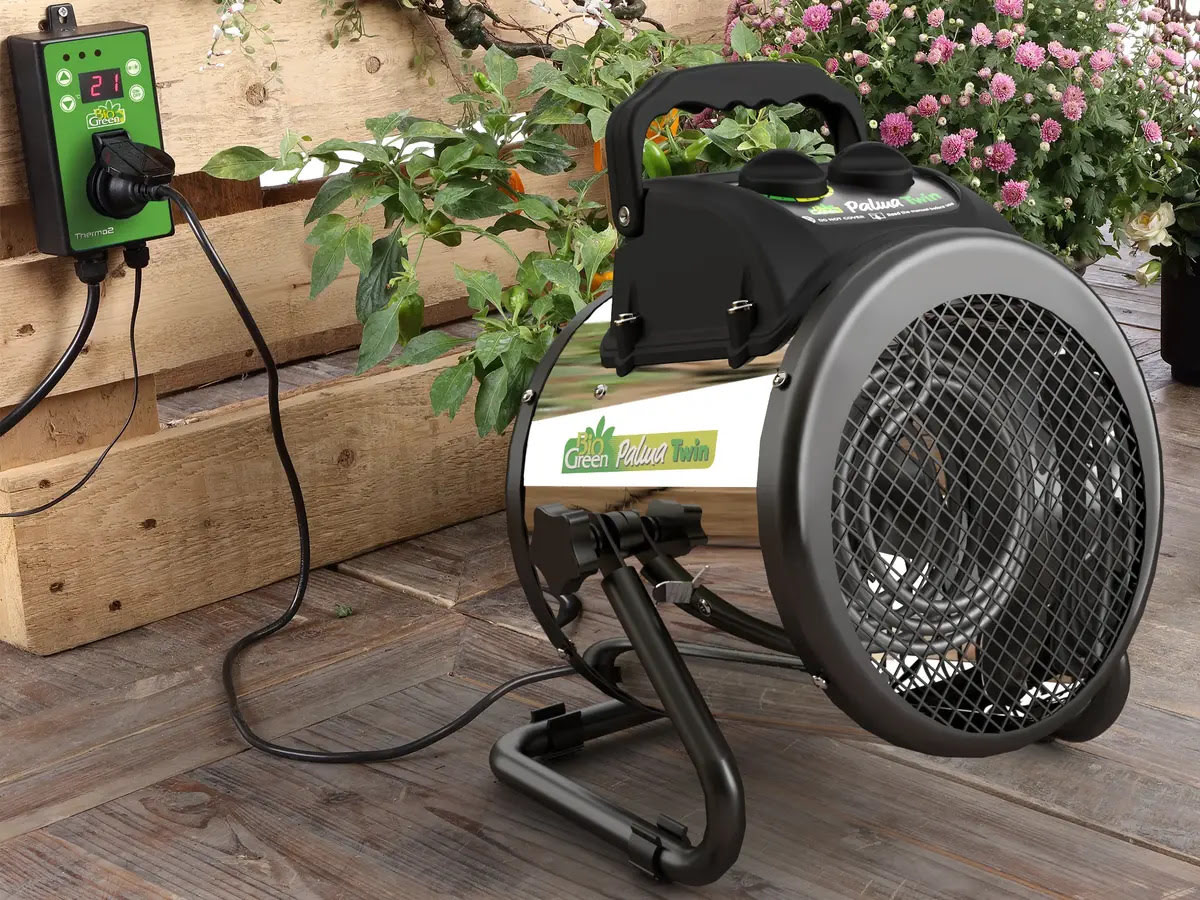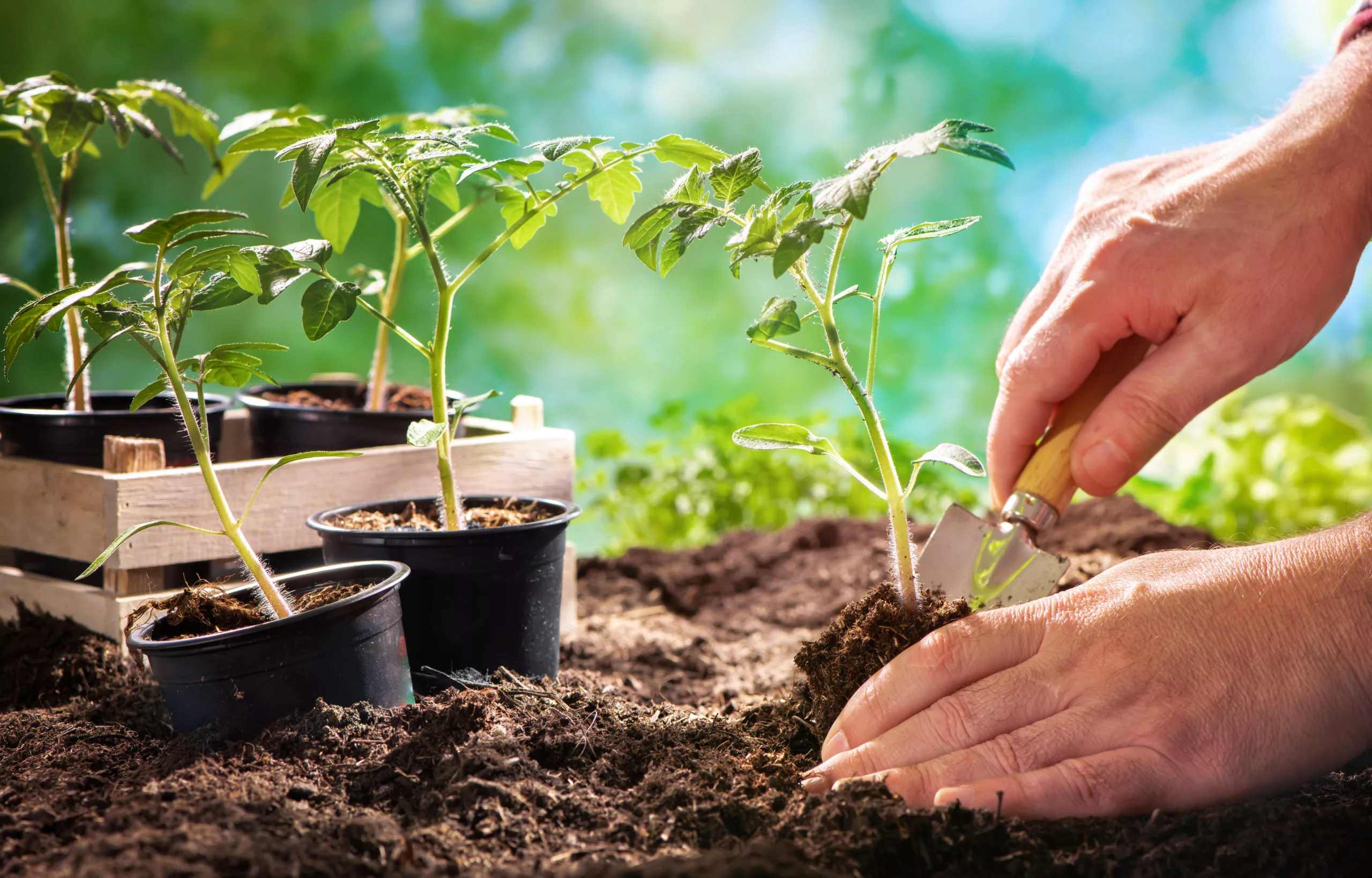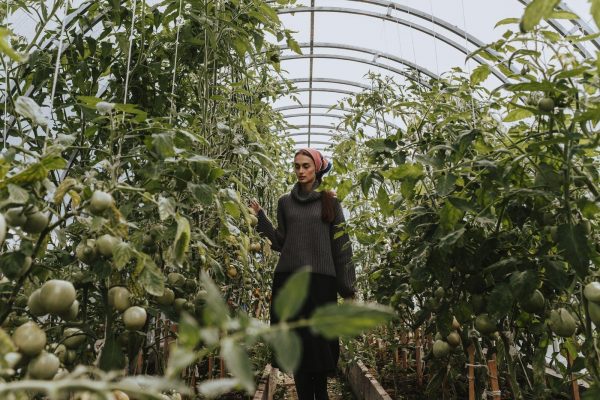Home>Types of Gardening>Edible Gardening>Spacing Garlic When Planting


Edible Gardening
Spacing Garlic When Planting
Modified: February 10, 2024
Learn the importance of spacing garlic when planting in your edible gardening. Find out how to ensure proper growth and maximize your harvest.
(Many of the links in this article redirect to a specific reviewed product. Your purchase of these products through affiliate links helps to generate commission for Chicagolandgardening.com, at no extra cost. Learn more)
Table of Contents
- Introduction
- Benefits of Properly Spacing Garlic
- Factors to Consider When Spacing Garlic
- Recommended Spacing for Different Garlic Varieties
- Planting Techniques for Spaced Garlic
- Importance of Maintaining Consistent Spacing During Growth
- Tips for Spacing Garlic in Containers
- Common Spacing Mistakes to Avoid
- Conclusion
Introduction
Edible gardening is a rewarding and satisfying activity, allowing individuals to grow their own fresh produce and reconnect with nature. Among the various plants you can cultivate in your edible garden, garlic stands out for its versatility and health benefits. Not only does garlic add flavor and depth to your culinary creations, but it is also packed with medicinal properties that promote overall wellbeing.
When it comes to planting garlic, proper spacing is key to ensure healthy plant development and maximize yield. In this article, we will delve into the importance of spacing garlic and provide helpful tips for achieving optimal results.
Proper spacing of garlic plants allows for adequate air circulation and sunlight penetration, which are crucial for preventing diseases and promoting healthy growth. Insufficient spacing can lead to crowded conditions, increased humidity, and a higher risk of fungal infections. Additionally, proper spacing provides enough room for the bulb to develop, resulting in larger and more flavorful cloves.
Factors such as garlic variety, soil quality, and available space should be taken into consideration when determining the ideal spacing for your garlic plants. Different varieties have varying growth habits and bulb sizes, requiring specific spacing to ensure optimal growth and development.
Throughout this article, we will explore the recommended spacing guidelines for various garlic varieties and discuss the techniques for planting and spacing garlic in both traditional garden beds and containers. We will also highlight common spacing mistakes to avoid to help you achieve the best possible garlic harvest.
Whether you are a seasoned gardener or just starting out, mastering the art of spacing garlic will not only maximize your harvest but also elevate the overall health and vitality of your plants. So, let’s dive in and discover the secrets to spacing garlic for a bountiful and delicious harvest!
Benefits of Properly Spacing Garlic
Proper spacing of garlic plants plays a vital role in their overall health and productivity. Here are some key benefits of ensuring adequate spacing:
- Optimal Air Circulation: When garlic plants are properly spaced, there is enough room for air to circulate freely between them. This prevents the buildup of excess moisture and reduces the risk of fungal diseases such as white rot and downy mildew. Adequate air circulation also helps in the efficient exchange of gases, allowing the plants to thrive.
- Enhanced Sunlight Exposure: Garlic plants require ample sunlight to produce energy through photosynthesis. Proper spacing allows sunlight to reach all parts of the plant, including the lower leaves and bulbs. Increased exposure to sunlight leads to stronger and healthier plants, resulting in better bulb development and more flavorful cloves.
- Reduced Competition for Nutrients: Spacing garlic plants adequately ensures that each plant has sufficient access to nutrients in the soil. When plants are overcrowded, they compete for resources like water, minerals, and organic matter, which can lead to stunted growth and smaller bulbs. By providing enough space between plants, you create an environment where each plant can access the nutrients it needs for optimal growth.
- Pest Prevention: Proper spacing can also help deter pests and minimize the risk of infestations. Crowded plants can create a favorable environment for pests and diseases, as they provide hiding spots and make it easier for pests to move from plant to plant. By spacing garlic plants adequately, you reduce the likelihood of pests settling in your garden and damaging your crop.
- Easier Harvesting: When garlic plants are properly spaced, it makes harvesting much easier. Ample spacing allows you to maneuver around the plants without damaging them, making it simpler to dig up the bulbs once they are mature. This saves time and effort, resulting in a more efficient and enjoyable gardening experience.
By understanding the benefits of properly spacing garlic plants, you can create an optimal growing environment that promotes healthy growth and abundant harvests. Now let’s explore some important factors to consider when spacing garlic in your garden or containers.
Factors to Consider When Spacing Garlic
When it comes to spacing garlic, several factors need to be taken into consideration to ensure optimal growth and yield. Here are some important factors to keep in mind:
- Garlic Variety: Different garlic varieties have varying growth habits and bulb sizes. Some varieties, such as hardneck garlic, produce larger bulbs with fewer cloves, while softneck garlic varieties generally have smaller bulbs with more cloves. It is important to research and understand the specific spacing requirements for the variety you are planting.
- Soil Quality: The condition of your soil influences the growth and development of garlic plants. Ensure that the soil is well-draining, loose, and rich in organic matter. Good soil structure allows for proper root development and nutrient uptake, contributing to the overall health of your plants.
- Available Space: Consider the available space in your garden or containers when determining the spacing for garlic. Adequate spacing will allow each plant to have enough room to grow without being overcrowded. This ensures that the bulbs develop fully and reduces the risk of competition for resources.
- Intercropping: If you plan to intercrop garlic with other plants, such as companion herbs or vegetables, consider their growth habits and space requirements. Garlic plants should not be overshadowed or overshadow other plants, as this can affect their growth and yield. Plan accordingly to provide each plant with sufficient space to thrive.
- Regional Climate: The climate of your region plays a role in determining the spacing of garlic. In hotter and drier climates, providing slightly more space between plants can help reduce competition for water and minimize the risk of disease. In cooler climates, closer spacing may be appropriate to maximize warmth and sunlight capture.
By considering these factors, you can tailor the spacing of your garlic plants to their specific needs. In the next section, we will explore the recommended spacing guidelines for different garlic varieties to help you achieve optimal results.
Recommended Spacing for Different Garlic Varieties
Each garlic variety has its own specific spacing requirements to ensure optimal growth and bulb development. Here are some general recommendations for spacing different garlic varieties:
- Hardneck Garlic: Hardneck garlic varieties, such as Rocambole and Porcelain, generally require more space compared to softneck varieties. Plant hardneck garlic cloves about 6 to 8 inches apart, with rows spaced 12 to 16 inches apart. The wider spacing allows for larger bulb development and accommodates the vigorous growth habit of hardneck garlic.
- Softneck Garlic: Softneck garlic varieties, like California Early and Silverskin, can be planted with slightly closer spacing compared to hardneck garlic. Space softneck garlic cloves about 4 to 6 inches apart, with rows spaced 8 to 12 inches apart. This closer spacing is suitable for the smaller bulbs and denser growth habit of softneck garlic.
- Elephant Garlic: Elephant garlic is known for its large bulb size. Give each elephant garlic bulb plenty of space, planting them about 8 to 10 inches apart, and allow for rows spaced 12 to 18 inches apart. The extra space allows these giant bulbs to reach their full potential.
It is important to note that these spacing recommendations are general guidelines, and you should always refer to the specific instructions provided by the garlic seed supplier or local gardening resources. Additionally, adjust the spacing based on the size of the cloves and the desired bulb size you want to achieve.
Now that we’ve explored the recommended spacing for different garlic varieties, let’s move on to the planting techniques and considerations for achieving proper spacing.
Planting Techniques for Spaced Garlic
Proper planting techniques are crucial for achieving the desired spacing and ensuring the healthy growth of garlic plants. Here are some steps to follow when planting garlic for optimal spacing:
- Select Quality Garlic Bulbs: Start by choosing high-quality garlic bulbs for planting. Look for bulbs that are firm, plump, and free from any signs of damage or disease.
- Prepare the Soil: Prepare the planting area by loosening the soil and removing any weeds or debris. Incorporate compost or well-rotted organic matter to enrich the soil and improve its fertility.
- Break the Bulbs: Carefully break the garlic bulb into individual cloves, making sure to keep the papery skin intact. Avoid removing the skin, as it protects the cloves during the early growth stages.
- Plant the Cloves: Dig a small hole or trench for each garlic clove, ensuring a depth of about 2 inches. Place the clove in the hole with the pointed end facing up and the flat end downward. Space the cloves according to the recommended spacing for the specific garlic variety.
- Cover and Mulch: Once the cloves are in place, gently cover them with soil, ensuring that they are adequately buried. Apply a layer of organic mulch, such as straw or chopped leaves, to help conserve moisture, suppress weeds, and maintain consistent soil temperature.
- Water Regularly: Garlic plants require consistent moisture for proper growth. Water the planted cloves thoroughly after planting and continue to water them regularly, especially during dry spells. Avoid overwatering, as excessive moisture can lead to rot.
By following these planting techniques, you can ensure that your garlic cloves are properly spaced and set up for healthy growth. However, spacing is not a one-time consideration – it needs to be maintained throughout the entire growth cycle of the garlic plants. Let’s explore the importance of consistent spacing during the growth stages in the next section.
Importance of Maintaining Consistent Spacing During Growth
Maintaining consistent spacing is crucial for the healthy development of garlic plants throughout their growth stages. Here’s why it’s important to maintain proper spacing:
- Reduced Competition: As garlic plants grow, their roots spread out in search of nutrients and water. Adequate spacing ensures that each plant has enough room to access these essential resources without competing with neighboring plants. This reduces stress on the plants and allows them to develop stronger root systems.
- Prevention of Disease Spread: Consistent spacing allows for good air circulation between plants, reducing the risk of disease transmission. It helps prevent the spread of fungal diseases that thrive in humid and crowded conditions. Proper spacing also allows for easy inspection and early detection of any signs of disease or pests.
- Optimal Sunlight Exposure: Garlic plants require ample sunlight for photosynthesis and bulb development. Maintaining proper spacing ensures that each plant receives adequate sunlight, minimizing the risk of shading and allowing for even growth across the entire garden. This results in healthier plants and larger, more flavorful bulbs.
- Easier Harvesting: When garlic plants are consistently spaced, it makes harvesting much easier. Ample space allows you to access the bulbs without damaging the plants or disturbing the roots of neighboring cloves. This allows for a smoother and more efficient harvest, maximizing the yield of your crop.
- Aesthetic Appeal: Consistent spacing not only enhances the health of your garlic plants but also improves the overall appearance of your garden. Neatly arranged plants with adequate spacing create a visually appealing and well-organized garden bed or container, adding to the overall enjoyment of your edible gardening experience.
By maintaining consistent spacing throughout the growth stages of your garlic plants, you create an ideal environment for healthy and productive growth. However, it’s important to note that each garlic variety may have specific spacing requirements, so always refer to the recommended guidelines.
Next, let’s discuss some important tips for spacing garlic in containers, as container gardening provides a versatile option for growing garlic in limited spaces.
Tips for Spacing Garlic in Containers
Container gardening offers a convenient and flexible way to grow garlic, especially if you have limited space or unfavorable soil conditions. Here are some essential tips for spacing garlic in containers:
- Container Size: Choose containers that are at least 12 inches deep and 12 inches wide to provide enough space for root development and bulb growth. Larger containers will accommodate more garlic cloves and allow for proper spacing.
- Soil Mix: Use a well-draining potting mix that is rich in organic matter. This will ensure that the garlic plants receive the necessary nutrients and allow excess water to freely drain out of the container.
- Spacing Guidelines: The spacing recommendations for garlic in containers are similar to those for traditional garden beds. Leave about 4 to 6 inches of space between individual cloves and maintain 8 to 12 inches of space between rows.
- Layering Technique: To maximize space in containers, you can plant garlic cloves in layers. Start by filling the container with a layer of potting mix, then plant the first row of cloves, ensuring proper spacing. Add another layer of potting mix and plant the second row of cloves, continuing this layering technique until the container is filled.
- Watering: Containers tend to dry out faster than garden beds, so it’s important to monitor the moisture levels and water the garlic plants accordingly. Keep the soil evenly moist, but avoid overwatering, as excessive moisture can lead to root rot. Mulching the container surface can help with moisture retention.
- Sunlight Exposure: Place your container in a location that receives at least six to eight hours of direct sunlight each day. Garlic plants need ample sunlight for growth and development, ensuring proper bulb formation.
- Fertilization: Container-grown garlic may require more frequent fertilization due to the limited availability of nutrients in the potting mix. Use a balanced, slow-release fertilizer or supplement with organic liquid fertilizers to provide the necessary nutrients for healthy growth.
Spacing garlic in containers requires careful planning and maintenance to ensure optimal growth. By following these tips, you can successfully grow garlic in containers and enjoy a bountiful harvest, even in limited gardening spaces.
Now that we’ve covered tips for spacing garlic in containers, let’s turn our attention to common spacing mistakes to avoid.
Common Spacing Mistakes to Avoid
When it comes to spacing garlic, there are some common mistakes that gardeners often make. By being aware of these mistakes, you can ensure that your garlic plants have the best chance of healthy growth and abundant harvest. Here are some common spacing mistakes to avoid:
- Overcrowding: One of the biggest mistakes is planting garlic cloves too close together. Overcrowding can lead to competition for nutrients, limited air circulation, increased humidity, and a higher risk of disease. Give each garlic clove enough room to grow and develop properly.
- Insufficient Spacing: On the other hand, planting garlic cloves too far apart can also lead to suboptimal growth. Garlic plants require proximity to each other for successful pollination and bulb development. Make sure to follow the recommended spacing guidelines for your specific garlic variety.
- Uneven Spacing: Inconsistent spacing between garlic cloves and rows can result in an uneven look as the plants grow. This can make it difficult to manage pests, harvest the bulbs, and maintain good air circulation and sunlight penetration. Take the time to space the cloves and rows uniformly.
- Ignoring Growth Habits: Different garlic varieties have varying growth habits. Some varieties produce larger bulbs, while others have smaller bulbs with more cloves. It is important to consider these growth habits when spacing your garlic plants. Ignoring the specific requirements of your chosen varieties can lead to suboptimal growth and yield.
- Poor Soil Preparation: Neglecting to prepare the soil properly can hinder the growth of garlic plants. Ensure that the soil is well-draining, rich in organic matter, and free from weeds or debris. Poor soil conditions can limit root development and lead to stunted growth and smaller bulbs.
By avoiding these common spacing mistakes, you can ensure that your garlic plants have the best possible conditions for healthy growth, disease prevention, and optimal bulb development. Now that we’ve covered spacing mistakes, let’s conclude this article with a recap of the importance of proper spacing in garlic gardening.
Conclusion
Proper spacing is crucial for the successful cultivation of garlic in your edible garden. By giving each garlic plant adequate room to grow and develop, you provide optimal conditions for healthy growth, disease prevention, and maximum yield.
When spacing garlic, consider factors such as the specific variety, soil quality, available space, and regional climate. Follow the recommended spacing guidelines for different garlic varieties to ensure optimal growth and bulb development.
Maintaining consistent spacing throughout the growth stages of your garlic plants is essential. It reduces competition among plants, prevents the spread of diseases, and ensures sufficient sunlight exposure. Additionally, proper spacing makes harvesting easier and adds an aesthetic appeal to your garden.
Whether you choose to plant garlic in traditional garden beds or containers, make sure to follow the recommended spacing guidelines and consider the specific needs of your garlic variety. Avoid common spacing mistakes such as overcrowding, insufficient spacing, uneven spacing, ignoring growth habits, and poor soil preparation.
By understanding the importance of spacing and implementing proper techniques, you can enjoy the benefits of a bountiful garlic harvest filled with flavorful cloves. So go ahead, take the time to space your garlic plants correctly, and watch as they thrive and reward you with a delicious addition to your culinary creations.







